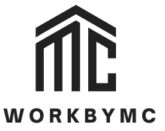Navigating the process of obtaining a student visa for studying in the U.S. can feel daunting. The right guidance can make a difference. You must understand the process clearly to avoid delays or setbacks. First, ensure you have your acceptance letter from a U.S. academic institution. This is crucial. Then, prepare your application for the appropriate visa category, often an F-1 visa. You must also gather financial proof to ensure you can support yourself. Seeking advice from a lawyer can be helpful if complexities arise. Remember, each step is important, and it’s crucial to meet deadlines. You must schedule and attend a visa interview at your local U.S. embassy or consulate. During the interview, answer questions honestly and provide all required documents. Following these steps will bring you closer to your academic goals in the U.S. Stay focused and organized, and you’ll find success.
Understanding Visa Types
For student visas, the most common options are the F-1 and M-1 visas. The F-1 visa is for academic studies at an accredited U.S. college or university. The M-1 visa is for vocational studies. Knowing which visa suits your educational plan is essential. This decision shapes your application path.
Application Steps
Let’s simplify the journey into actionable steps:
- Get Accepted: Secure your place at an accredited U.S. institution.
- Pay SEVIS Fee: After acceptance, pay the SEVIS fee. Visit the SEVIS I-901 Fee to complete this step.
- Complete Form DS-160: Submit your DS-160 form. This online form is vital for your visa interview.
- Schedule the Interview: Book your visa interview. Do this at the U.S. embassy or consulate in your country.
- Organize Documents: Gather required documents like your passport, photo, and financial proof.
- Interview Day: Attend your interview. Answer clearly and provide all necessary paperwork.
Required Documents
Preparation avoids unnecessary stress. Here’s what you need:
- Valid passport
- Form DS-160 confirmation page
- Application fee payment receipt
- Photo matching U.S. visa standards
- Form I-20 from your school
- Financial proof (bank statements or sponsor letters)
- Academic records
Interview Preparation
Your interview is a pivotal moment. Here’s how to handle it:
- Dress neatly and appropriately.
- Arrive early.
- Be honest in your responses.
- Show ties to your home country, indicating you’ll return after your studies.
Comparison of F-1 vs M-1 Visas
| Visa Type | Purpose | Work Possibilities |
| F-1 | Academic Studies | On-campus jobs, Optional Practical Training (OPT) |
| M-1 | Vocational Studies | No work allowed, practical training only after course completion |
Common Pitfalls
Avoid these mistakes:
- Not applying early enough.
- Incomplete documentation.
- Ignoring visa interview importance.
After the Interview
If approved, your passport will include your visa. Check its accuracy right away. If denied, listen carefully to the reasons and reapply if possible. Understanding the reason strengthens your next attempt.
Additional Resources
For more information, visit the U.S. Department of State: Student Visas. This site provides detailed guidance and updates.
Embarking on this journey requires preparation and patience. By following these steps and staying informed, you stay on track to studying in the U.S. Remember to seek help when needed and stay focused.

